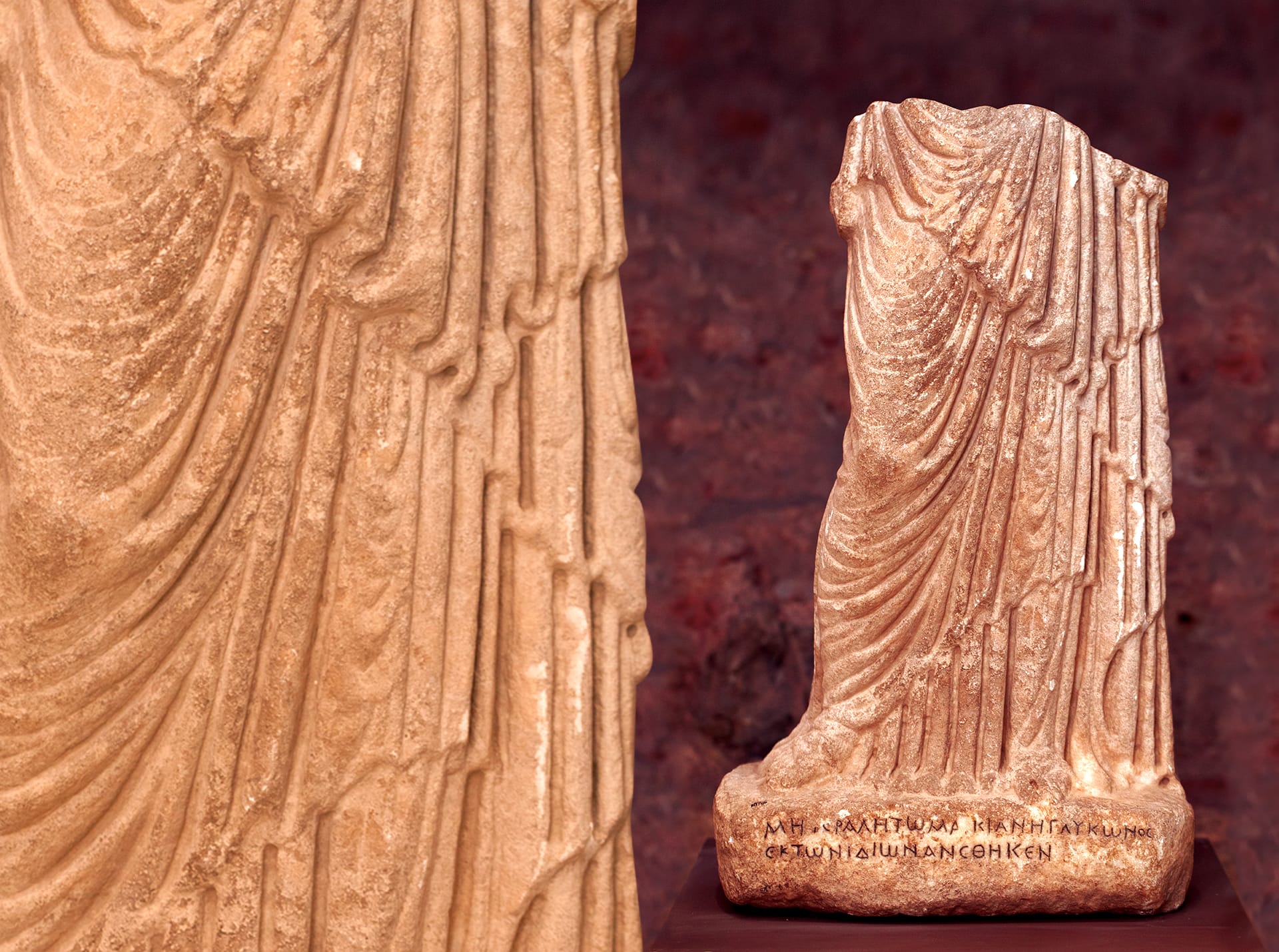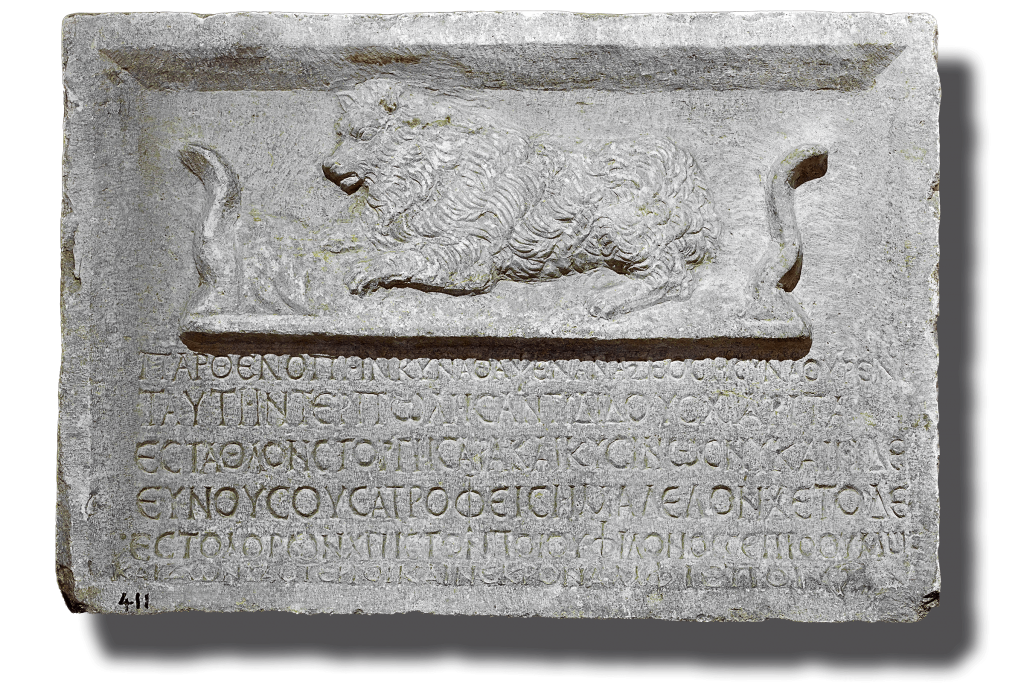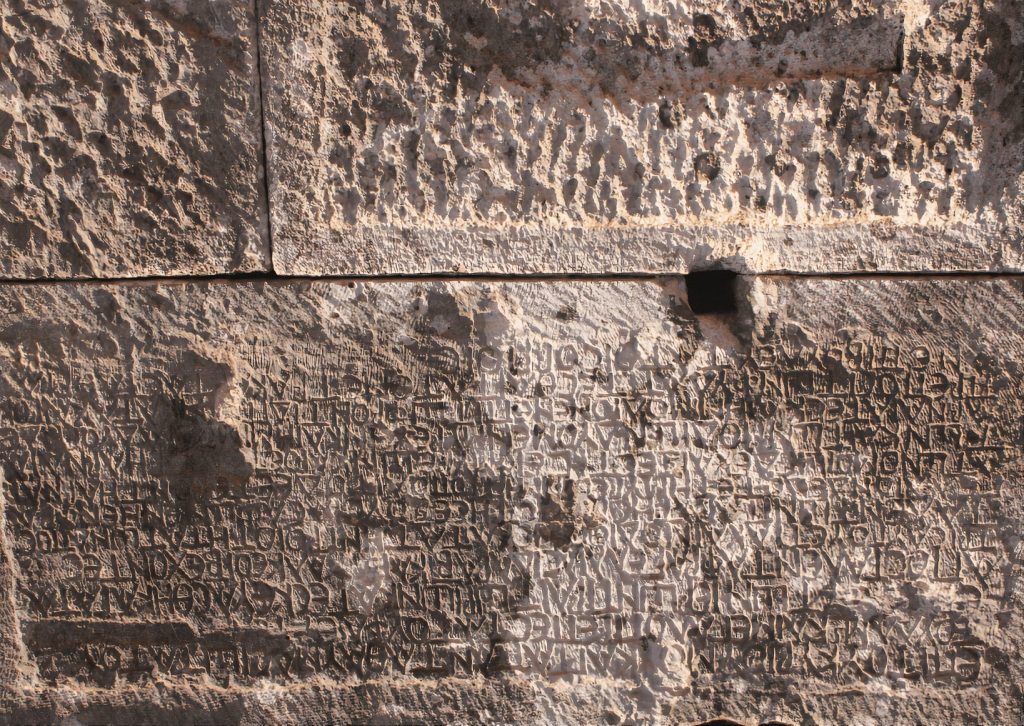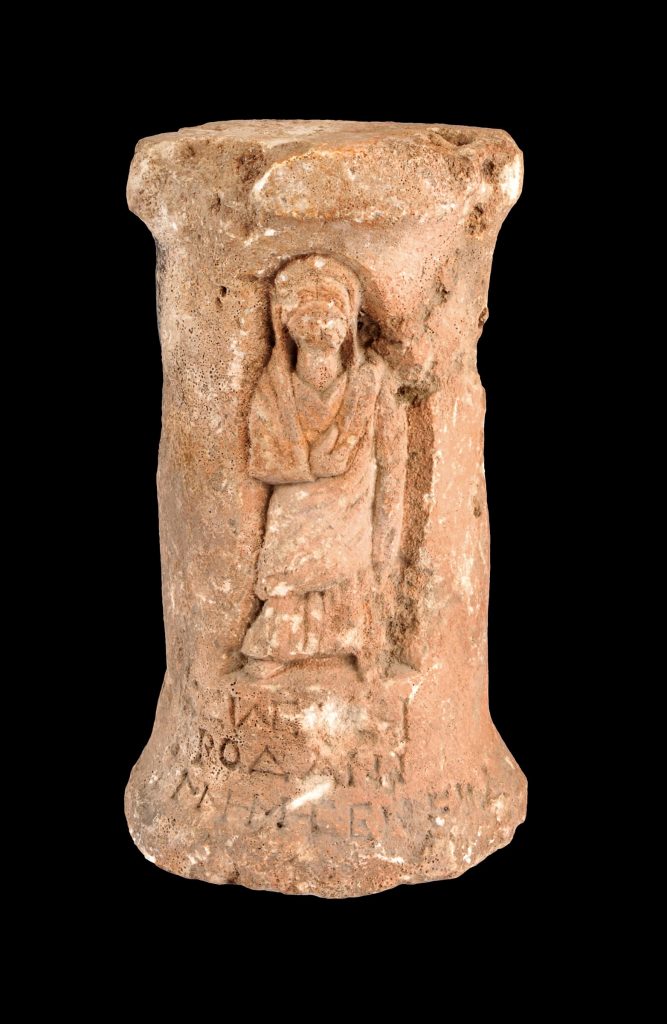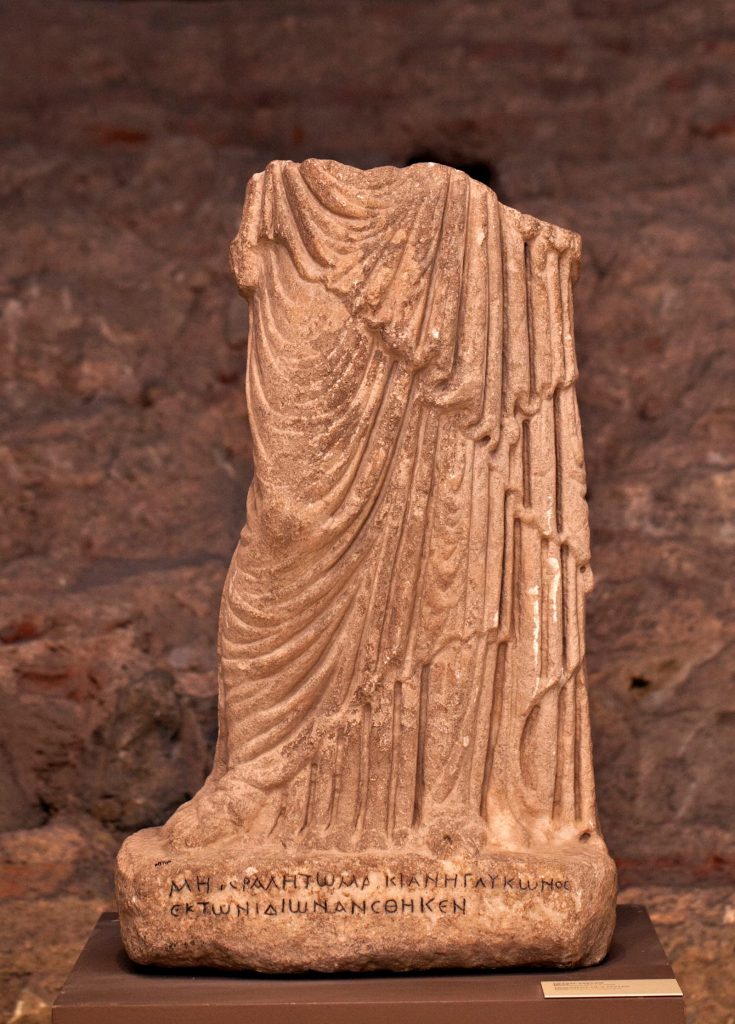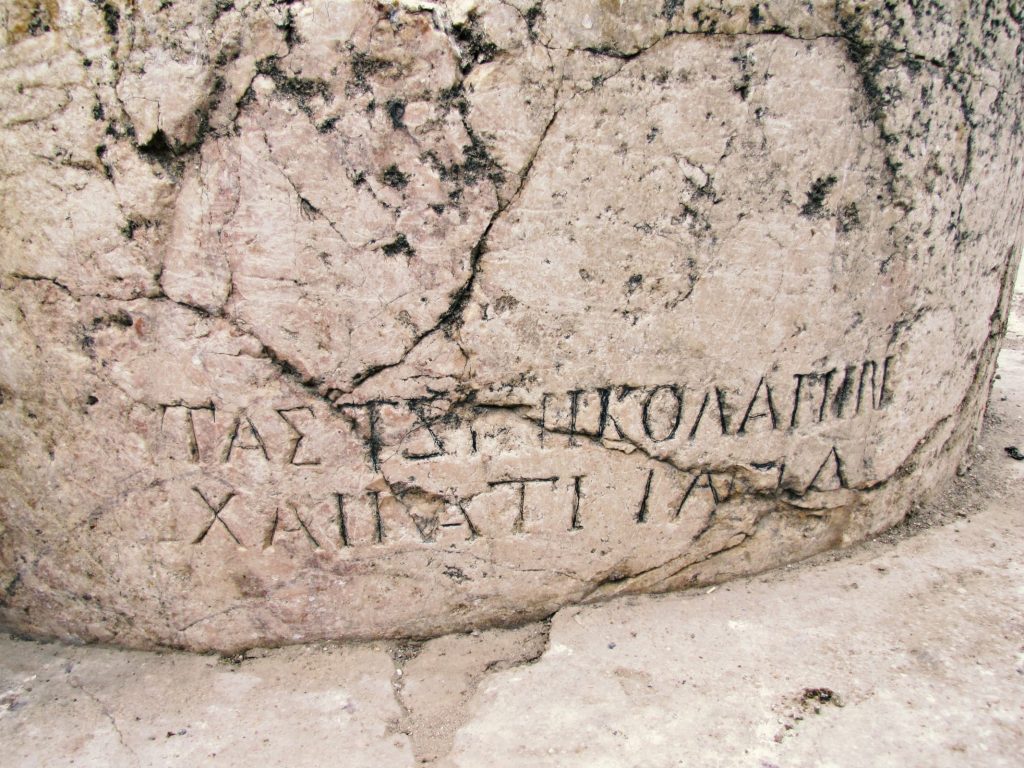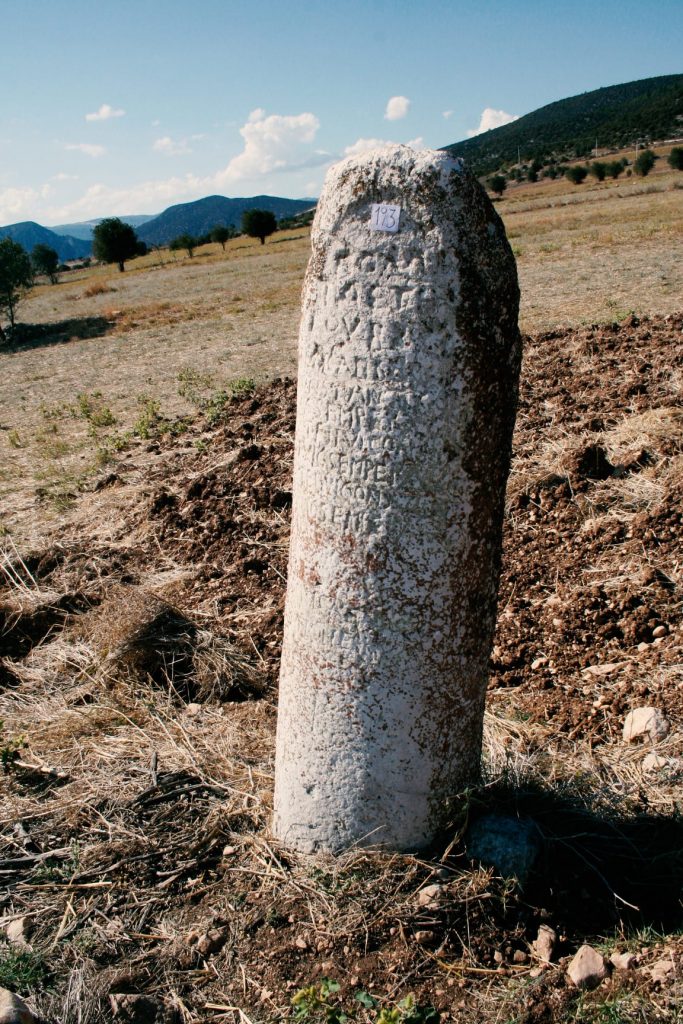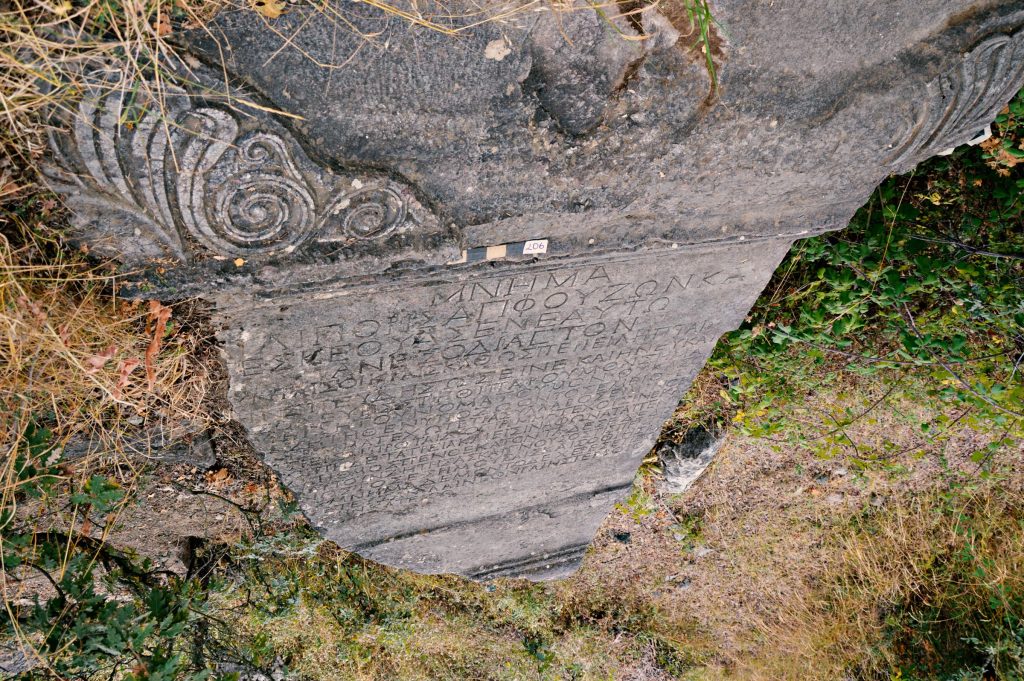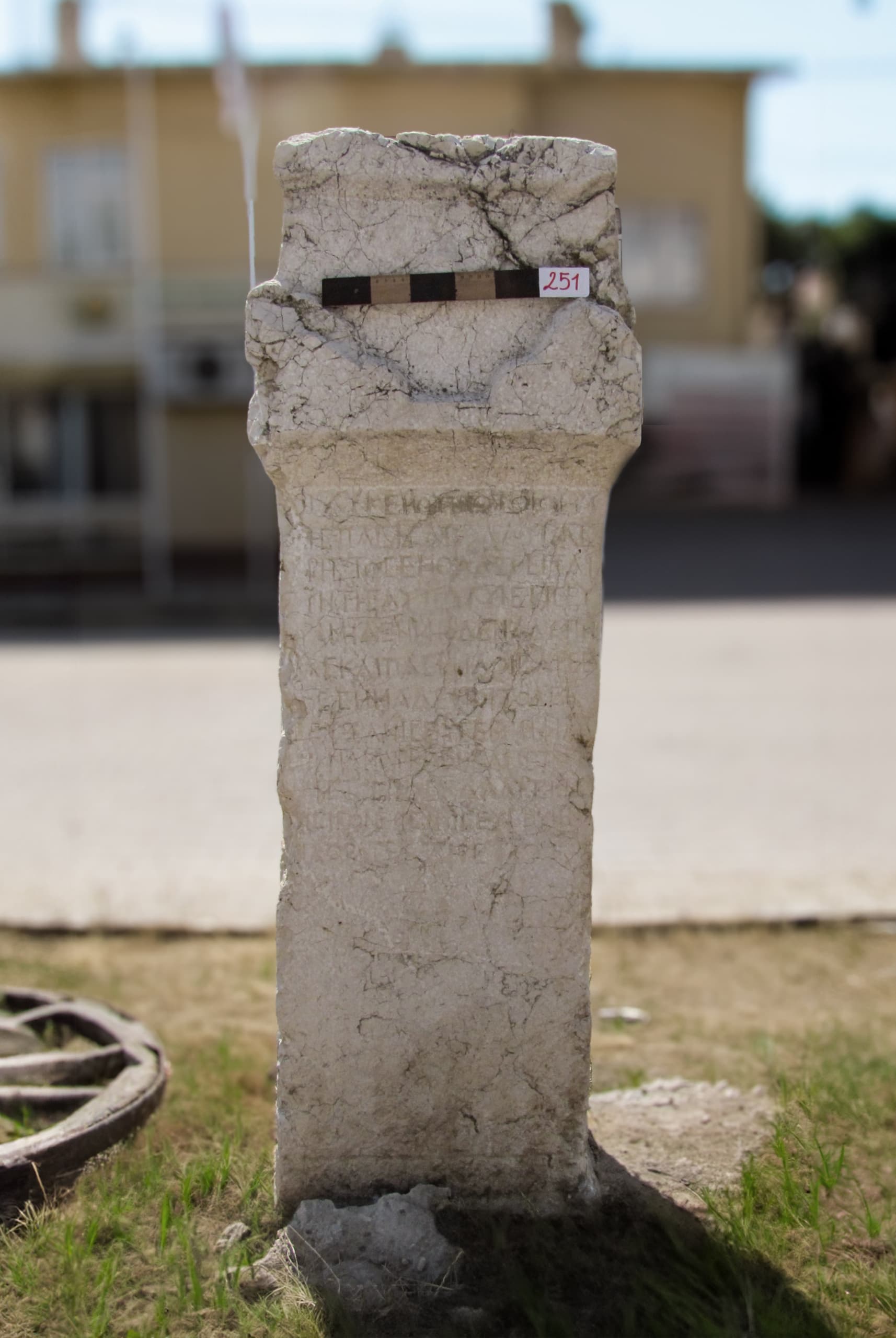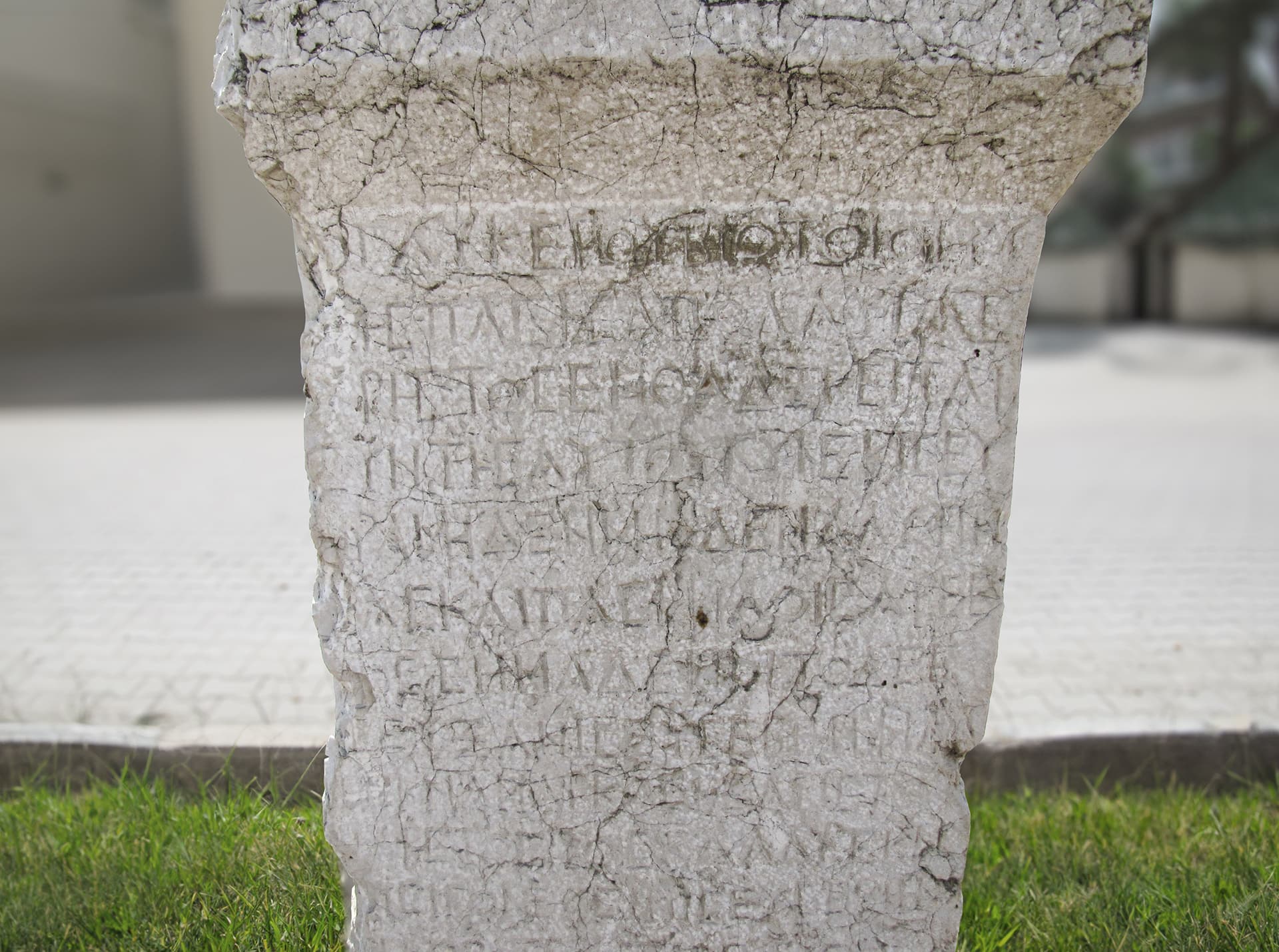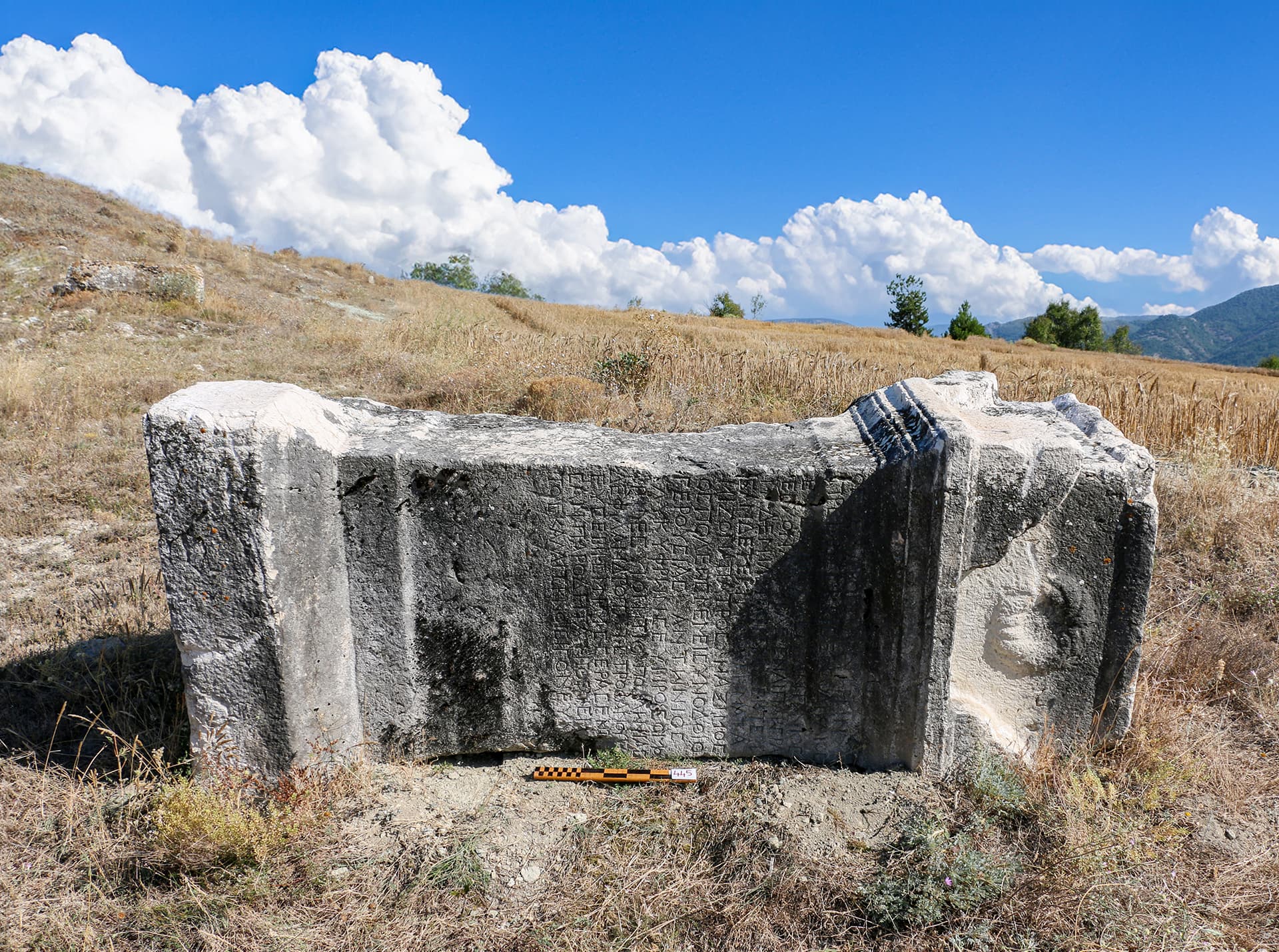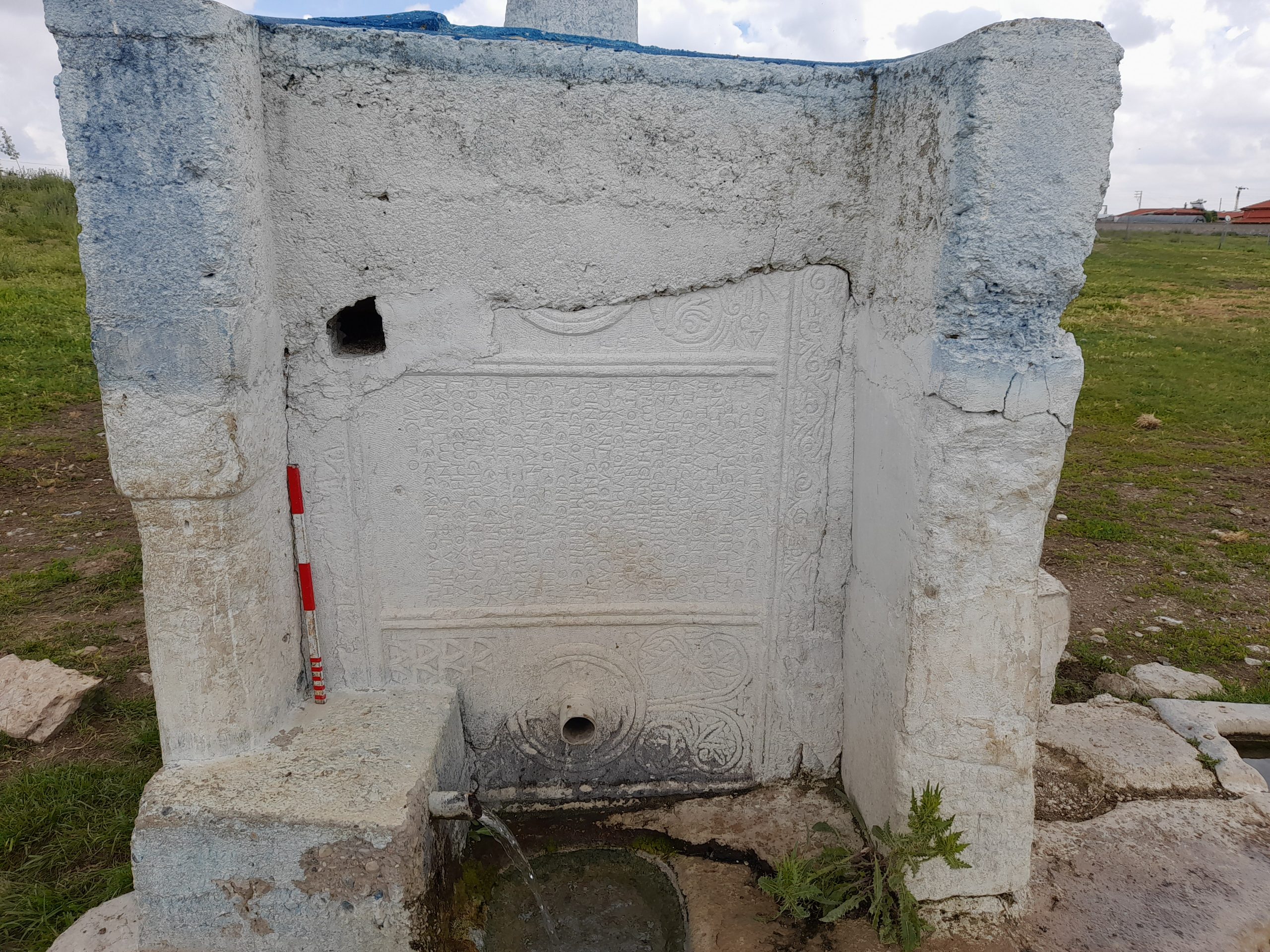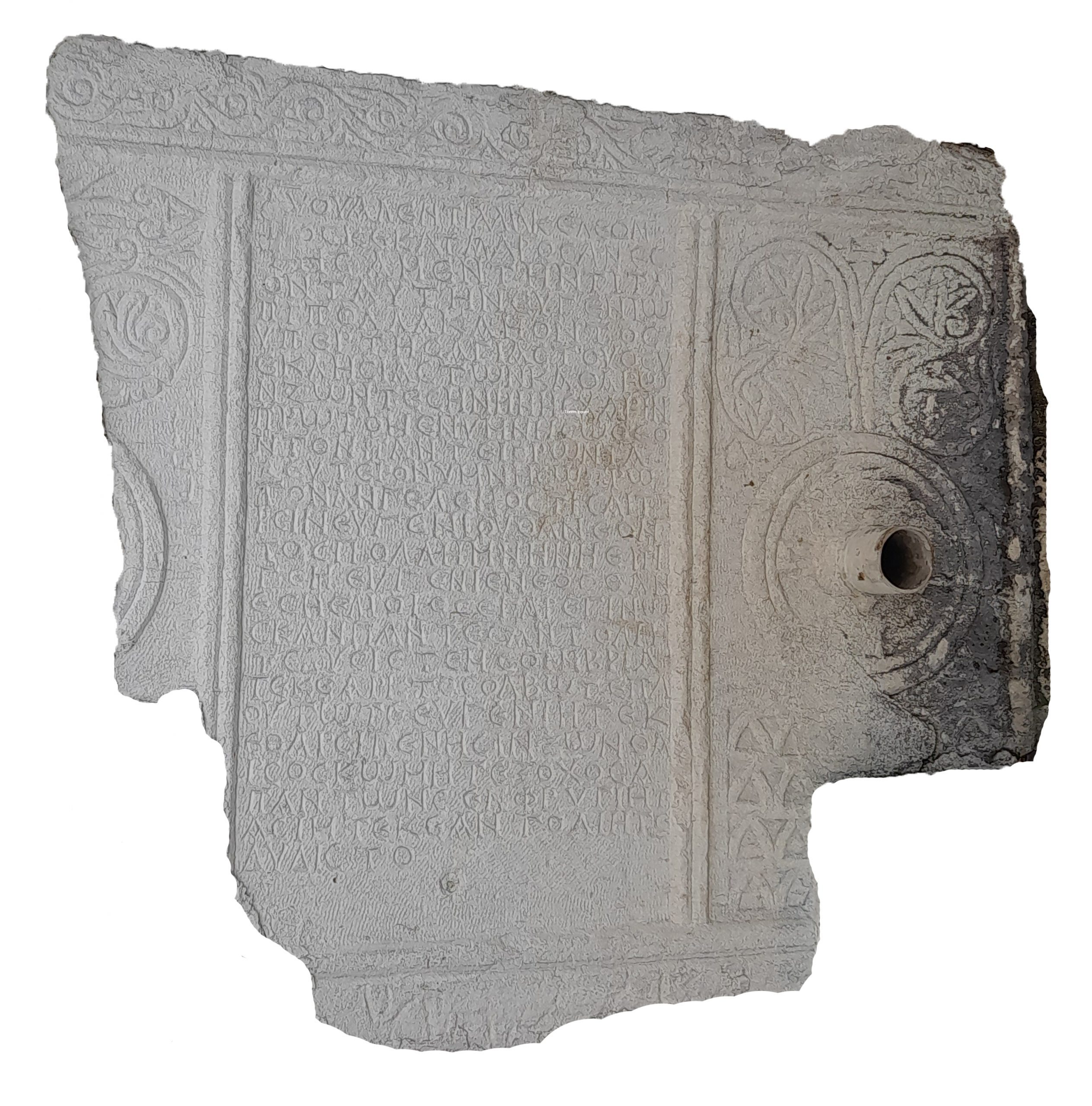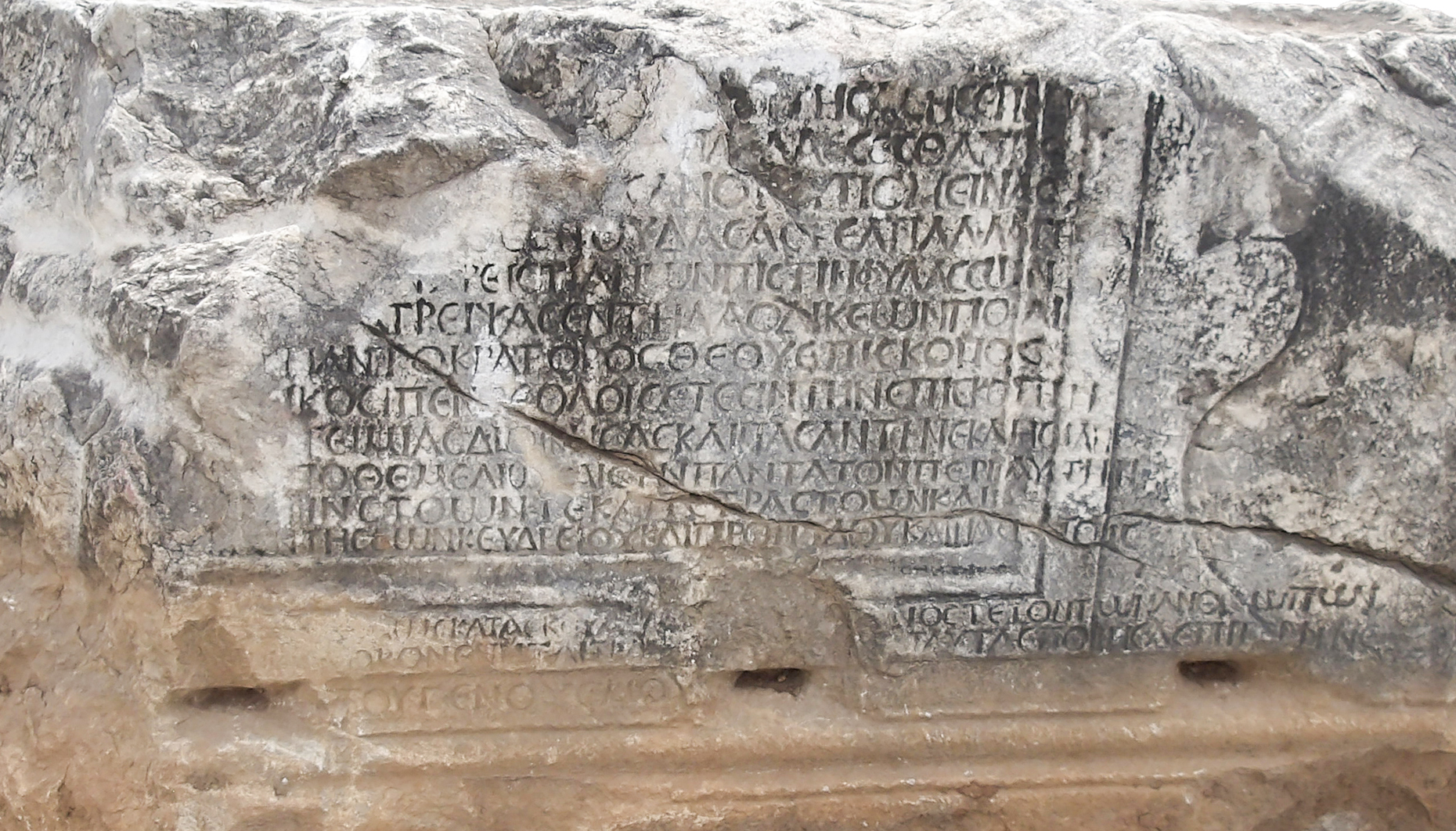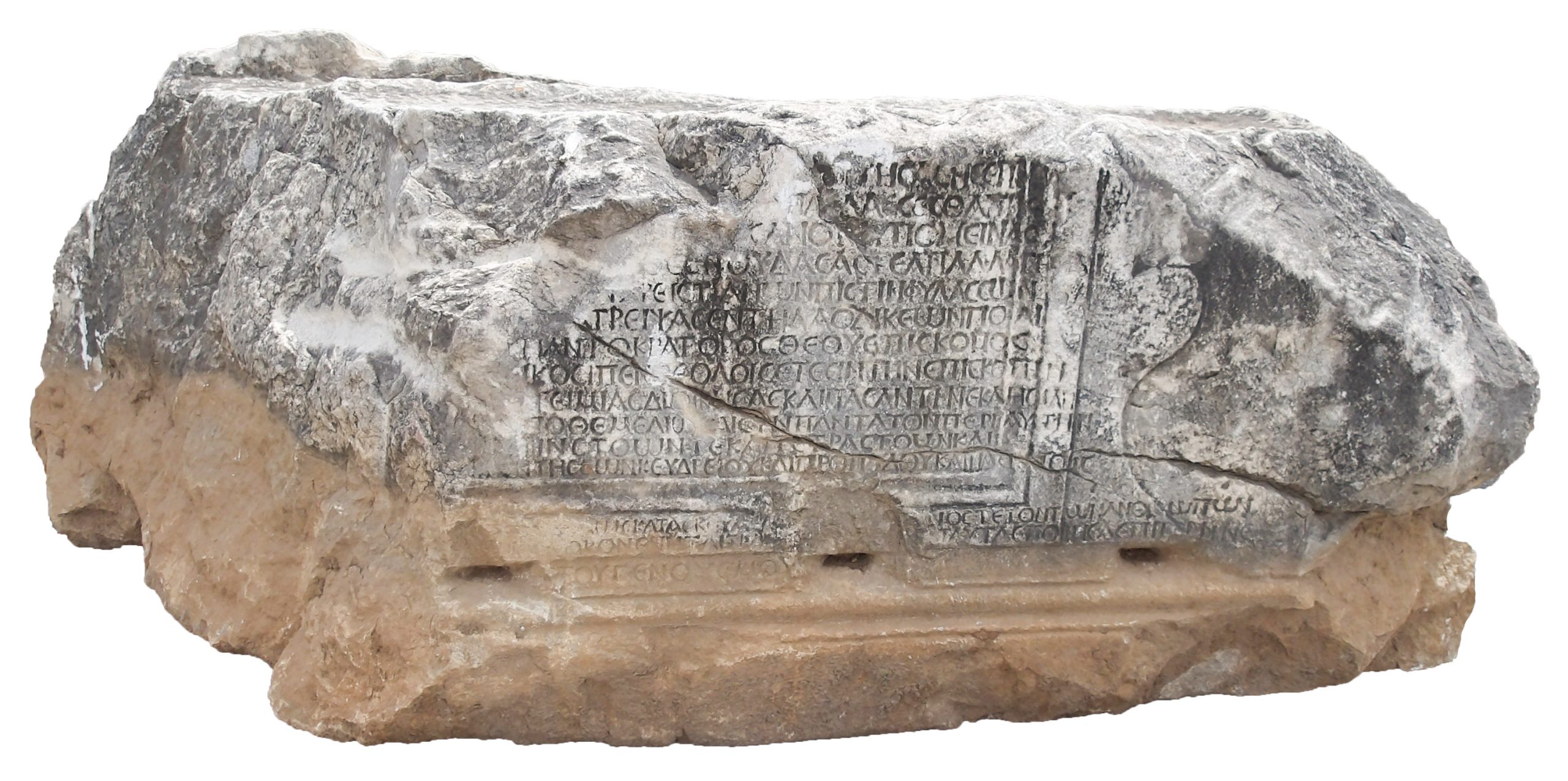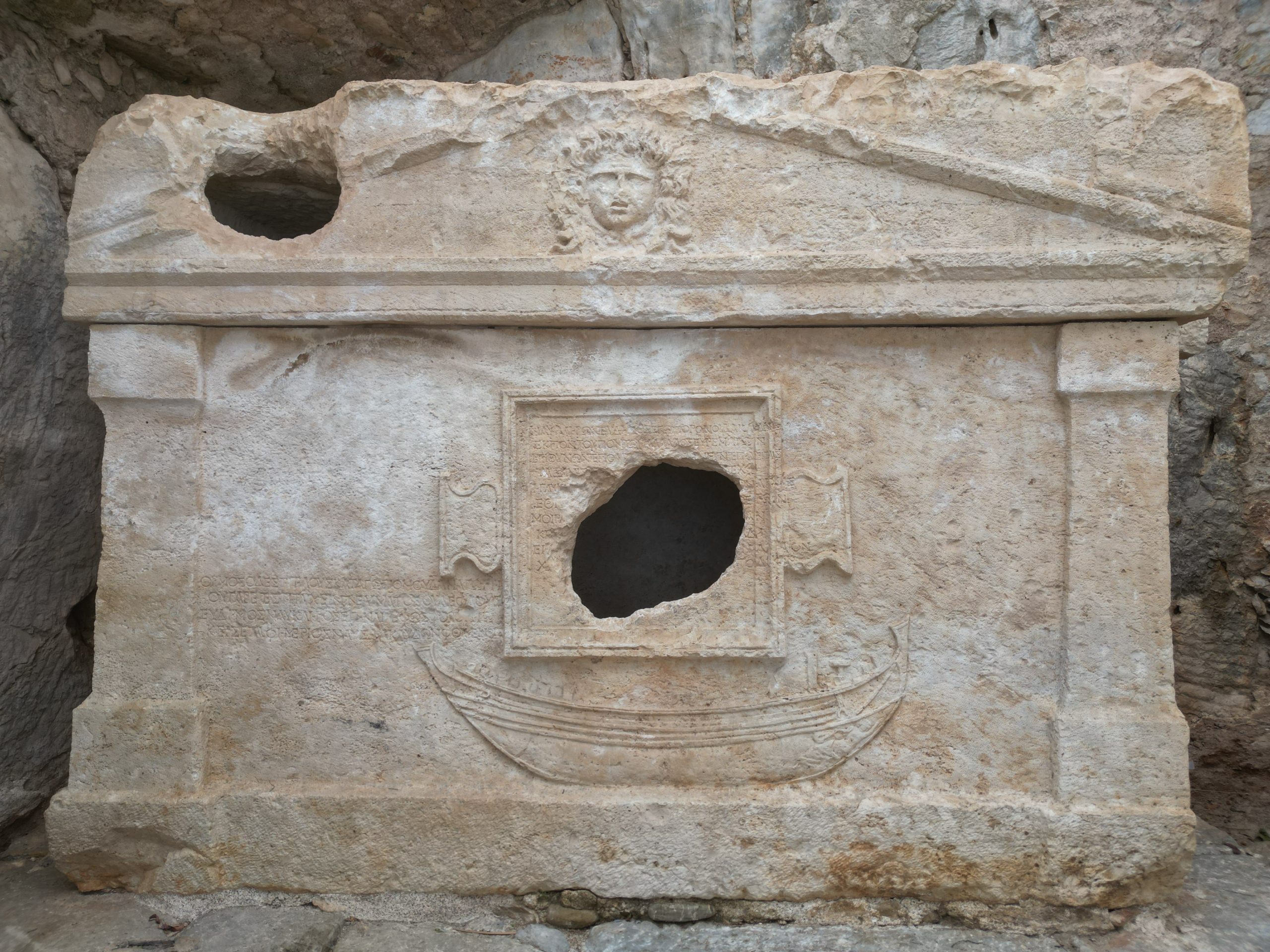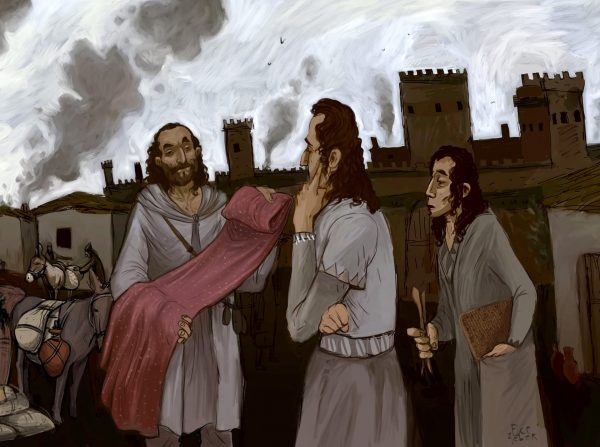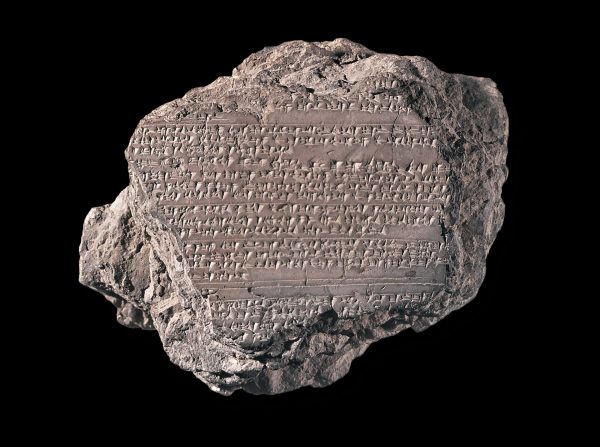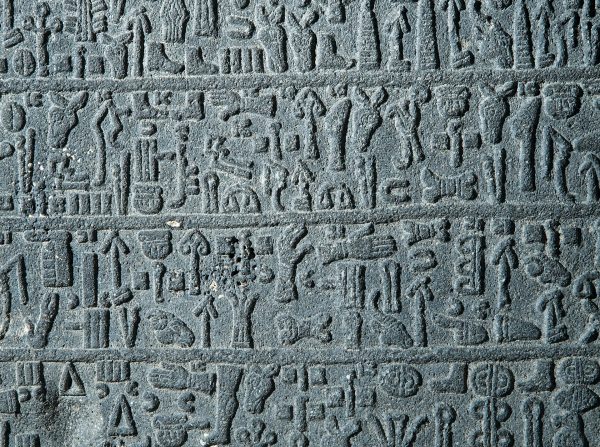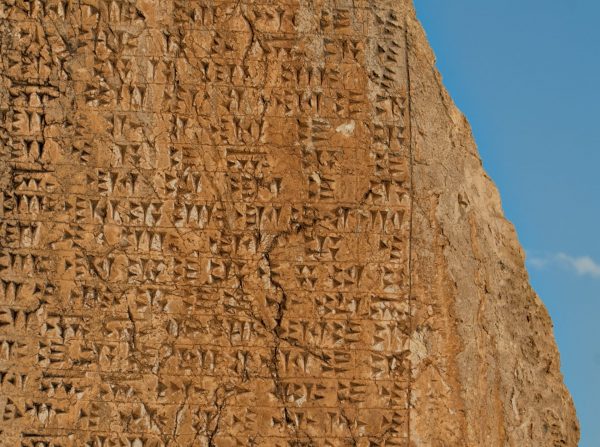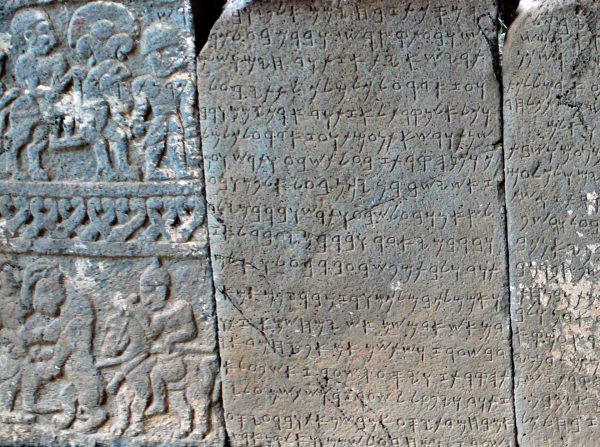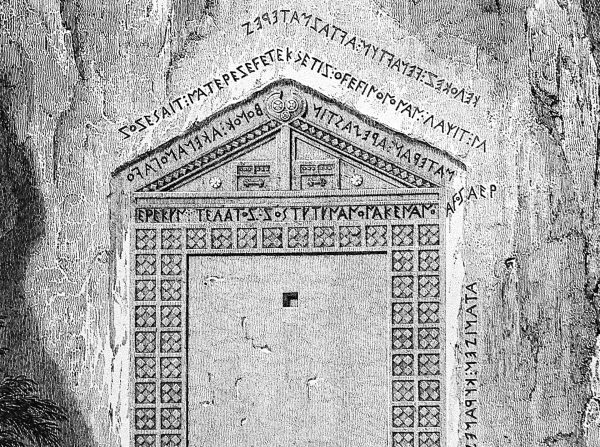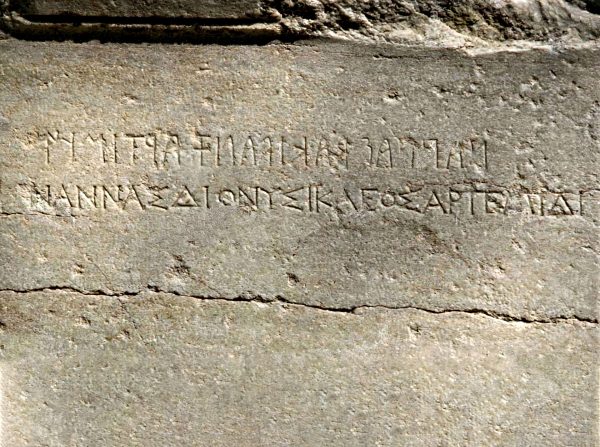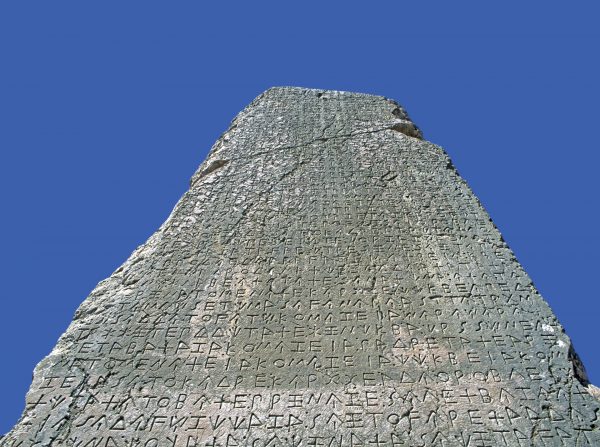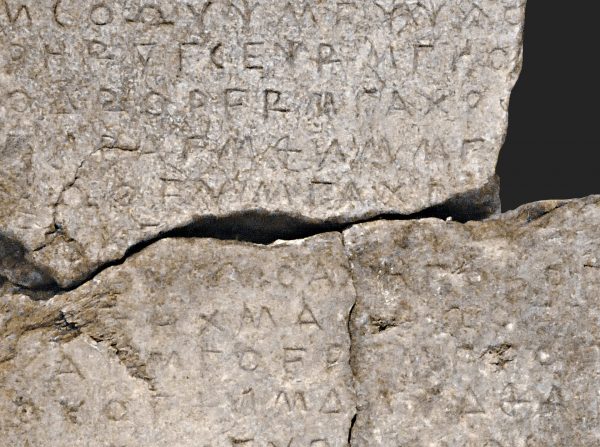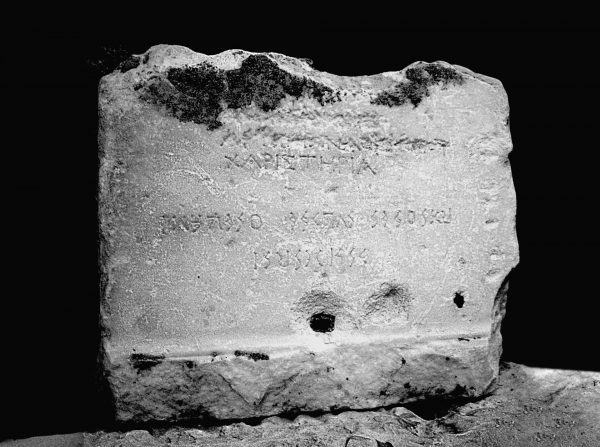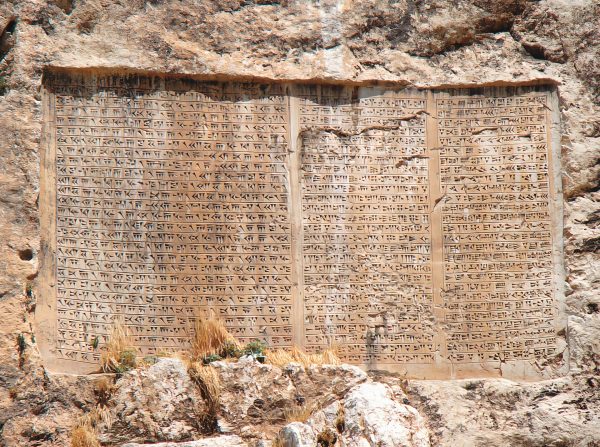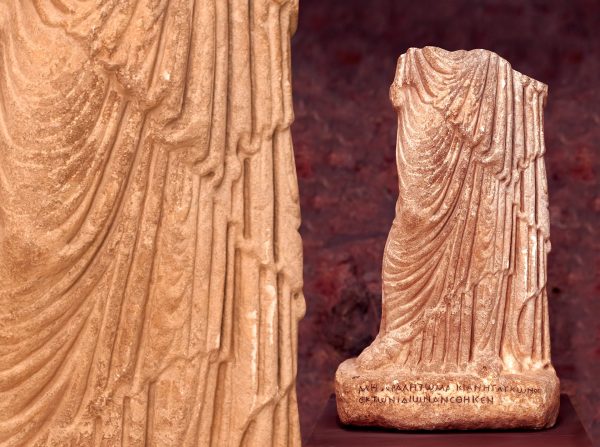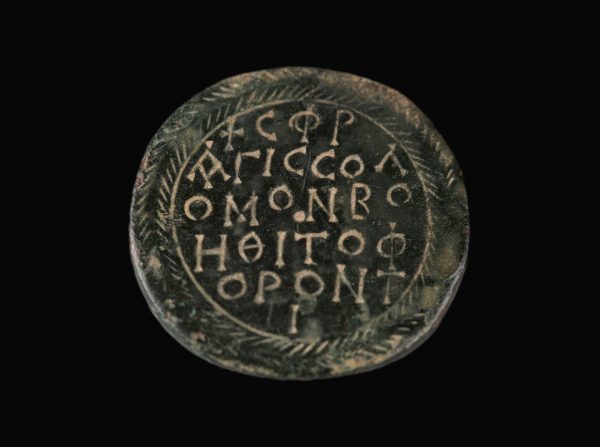[Μ(ᾶρκος) Ἰού(λιος) Εὐγένιος Κυρίλλου Κέλερος Κουησσέως βουλ(ευτὴς)]
[στρατευσάμενος ἐν τῇ κατὰ Πισιδίαν ἡγεμονικῇ τάξι]
[καὶ γήμας θυγατέρα Γαΐου Νεστοριανοῦ συνκλητικοῦ]
4 [Φλ(αβίαν) Ἰουλί(αν) Φλαουιανὴν καὶ μετ’ ἐπιτειμίας στρατευσάμενον]
[ἐν δὲ τῷ μ̣εταξὺ χρόνῳ κελεύσεως φοιτησάσης ἐπὶ Μαξιμίνου]
τοὺς Χρ[ε]ιστιανοὺς θύειν καὶ μὴ ἀπα[λ]λάσσεσθαι τῆς
στρατεί[α]ς̣ πλείστας δὲ ὅσας βασάνου̣[ς] ὑπομείνας
8 ἐπὶ Διογέν̣ους ἡγεμόνος σπουδάσας [τ]ε ἀπαλλαγῆναι
τῆς στρατε̣ίας τὴν τῶν Χρειστιανῶν πίστιν φυλάσσων
χρόνον τ[ε] βραχὺν διατρείψας ἐν τῇ Λαοδικέων πόλι
καὶ βουλήσ̣ε̣ι τοῦ παντοκράτορος θεοῦ ἐπίσκοπος
12 κατασταθ[εὶ]ς καὶ εἴκοσι πέντε ὅλοις ἔτεσιν τὴν ἐπισκοπὴν
μετὰ πολ[λ]ῆς ἐπιτειμίας διοι[κ]ήσας καὶ πᾶσαν τὴν ἐκλησίαν
ἀνοικοδο[μ]ήσας ἀπὸ θεμελίων καὶ σύνπαντα τὸν περὶ αὐτὴν
κόσμον τ̣ο̣ῦτ’ ἐστιν στοῶν τε καὶ τ[ετ]ραστόων καὶ
16 ζωγραφιῶ̣[ν] καὶ κεντήσεων κὲ ὑδρείου καὶ προπύλου καὶ πᾶσι τοῖς
λιθοξοϊκοῖς ἔργοις καὶ πᾶ̣[σι ἁπ]αξαπλῶς κατασκευά[σας λειψόμε]νός τε τὸν τῶν ἀνθρώπων
βίον ἐποίησα ἐμαυτῷ πέ[λτα τ]ε̣ καὶ σορὸν ἐν ᾗ τὰ προ[γεγραμμένα] ταῦτα ἐποίησα ἐπιγρ<α>φῖνε
[εἰς κό]σ̣μον τῆς τε ἐκ[λησίας κ]ὲ τοῦ γένους μου.
“(I am) Marcus Iulius, son of Kyrillos Celer of Kuessos, member of the boule, served in the officium of the governor of Pisidia, married to Flavia Iulia Flaviane, daughter of Gaius Nestorianus, member of the Roman Senate, served honorably in the military Eugenios; In the time of Maximinus, an order came that Christians should offer sacrifices and not refrain from (this) service; He endured great suffering during the time of Governor Diogenes; There was an attempt to abdicate his duty while protecting Christians. (I) stayed for a short time in the city of the Laodiceans, and by the will of God Almighty I became a bishop, and governed this diocese with great honor for twenty-five years, and destroyed the whole church and all the decorations around it, that is, stoas, tetrastoas, wall-paintings, mosaics. I rebuilt (everything) from its foundations, the fountain and the propylaion (= entrance gate) with all its marble decorations. I, who was waiting to leave life (now), had a plinthos and a sarcophagus built for me. I had the above written on this sarcophagus to serve as an ornament for the church and my family.”
[Translation: H. S. Öztürk]

